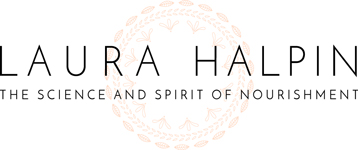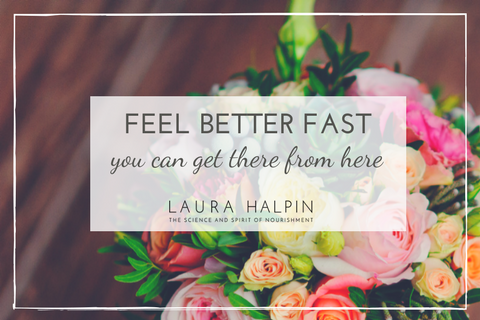
Feel Better Fast: You can get there from here.
When a person is taking strides to address his/her health, it makes a lot of sense to begin with the obvious and general (i.e., If you’re drinking a six pack of beer a day, it doesn’t make sense to start supplementing with resveratrol to lengthen your life, right?) Yet starting with the obvious and general can be the most difficult place to begin. It’s easier to get distracted with an alluring promise of a quick fix.
Yet, addressing the obvious and general can be boring, time consuming, and kind of lonely. In this lonely and boring place, a community can be motivating and uplifting.
I love working with clients one-on-one. I really do. It’s targeted and efficient. At the same time, when working with people in groups, it’s generally easier for my clients to make more ambitious changes more quickly. Why is this important? Because when people are willing to dive in, they see results much more quickly than if they were toe-dipping. These quick results are motivating and fun. The bonus is having a group with whom one can report successes and frustrations.
In two weeks, I’ll be leading a group of clients through the cleansing process. I’ve written at length about the importance of ridding the body of toxins. Yet another fascinating part of the 21-day Create Inner Ease Cleanse is that it’s also an elimination eiet (don’t get hung up on the word diet.)
An Elimination Diet: What’s that?
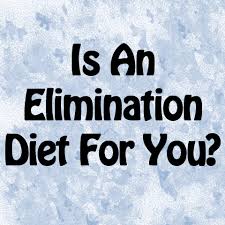 It doesn’t matter if someone has high blood pressure, chronic pain, irritable or inflammatory bowel, migraines, depression, brain fog, or seasonal allergies, an elimination diet can help. You may have heard of the popular Dr. Mark Hyman, current chairman of the Institute for Functional Medicine. In his practice, Hyman won’t see a client until that client has done an elimination diet. Hyman claims 80% of these patients get so much better that all they need is some fine-tuning from there.
It doesn’t matter if someone has high blood pressure, chronic pain, irritable or inflammatory bowel, migraines, depression, brain fog, or seasonal allergies, an elimination diet can help. You may have heard of the popular Dr. Mark Hyman, current chairman of the Institute for Functional Medicine. In his practice, Hyman won’t see a client until that client has done an elimination diet. Hyman claims 80% of these patients get so much better that all they need is some fine-tuning from there.
Why?
The bedrock of any chronic condition is inflammation. You name the condition, whether it’s psoriasis, arthritis, MS or cancer, inflammation is at its root. Yes, a person may have a genetic disposition for a particular chronic illness, but genes are influenced by the environment they inhabit (called epigenomics). Our food and lifestyle create this environment. Food is information for the body, and it programs the digestive system and the cells in the body to heal or protect itself. If protection is required, the immune system sends in its troops to attack. This protection is inflammation.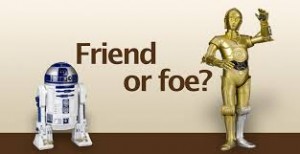
If the body perceives a food as foe and that food is continually eaten, the body ends up in a perpetually inflamed state. Without identifying and removing that food, the body will remain inflamed and symptoms will surface in any system of the body (not just in the digestive tract).
If you were a fly on the wall of a cleansing group, you’d hear people talking about adult acne disppearing, pain lifting, moods and depression clearing, digestion easing and pounds melting. I’m never surprised but always amazed at the power of food to heal. It’s so awesome.
As the body’s inflammation cools, the immune system has a chance to rest. Symptoms often start to lift in a matter of days. Not always, but often. After giving our bodies a chance to heal, we add foods back in one at a time, provoking the immune system. If there is a reaction, we know that food is a foe. It’s different for everyone.
Over the course of the month, we learn: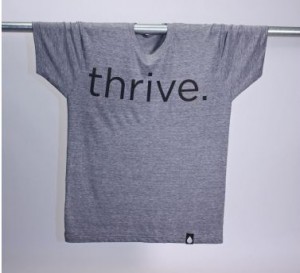
- What should we avoid?
- What nourishes us?
- What makes us thrive?
Though the process takes effort and attention, for the time invested, the payoff is quick, long lasting and it does no harm.
And then…
What You’ll Learn
During the month, I bring participants up to speed on what’s the latest in science and health. They learn about:
- Gut bacteria and how to grow a healthy bacterial garden in your body
- Sugar cravings and what to do about them
- Fats to avoid and fats to enjoy
- Heartburn/Acid Reflux: why too much acid is not the problem
- Foods that are friends and foods that are foes (and why it’s different for different people)
- Food sensitivities, why they develop and what the impact is
- Cholesterol and saturated fat and why they are grossly misunderstood
- Label reading: what to look for and what to ignore
- Calories and whether they’re important
- Moods, focus, memory, sleep and energy and how they are affected by what and how we eat
- Gluten: Is all the fuss fact, fad or fiction?
- Meditation: how to keep it simple and approachable
- Good habits and how to build and keep them without white knuckles
Let’s eat.
The best part is that we eat a lot of delicious, satisfying foods and talk and laugh.
So join me. Bring a friend. Please forward this along to someone you love who might benefit. Feel free to contact me with questions. Click here for more information.
Warmly,
Laura
